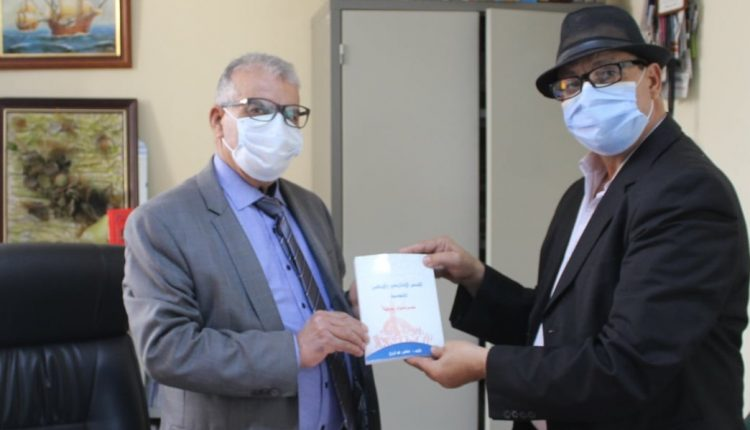Dr. Mohamed Awarag Publishes A Valuable Book Entitled “Amazigh Poetry In The Middle Atlas – Aesthetic Specifics –

The book “Amazigh Poetry in the Middle Atlas - Aesthetic Specifics” was recently published by its author, Dr. Mohamed Aourag. The edition came in 152 pages of medium cut. It is considered the fourth in the repertoire of the author whose eyes saw the light in 1961, Beit Benmoussa. Pullman holds a Ph. He is currently the head of the Regional Center for Documentation, Animation and Educational Production at the Regional Academy of Education and Training in the Fez-Meknes region.
In the introduction to the book, we read: The importance of the subject of Amazigh poetry in the Middle Atlas - aesthetic peculiarities - lies in its being a Moroccan poetic text associated with the Moroccan self as an obsession and experience. existential with its values and specificities in the arms of a fertile field and over a diverse geographical area, ethnically rich and culturally rich.
In his book, the author deals with the historical stages through which Amazigh poetry passed, and what distinguishes each stage, with reference to the most important historical influences. The characteristics of Amazigh oral poetry were reviewed, with reference to its creative and artistic foundations, as well as standing at the obstacles of defining Amazigh oral poetry, this singular and multiple.
Also in this book, the author explained the position of the Amazigh poet on poetry, and revealed his view of the process of poetic creativity, as well as his social function, through the poems issued by him that clarify his position and its manifestation. These poems are the ones in which the poet talks about poetry, and they are the ones we rode as a ride to get us to try to clarify the concept of his creative process.

It should be noted that the author took the initiative from the outset to say, “All the poetry we have collected does not include poems that are specialized in themselves from beginning to end in terms of his concept of poetry and his position on it. All that we have come across is the looks spread in the folds of his poems and pieces, and what prompted us to search for poetic concepts that help in the study of Amazigh poetry is an attempt to monitor the features of Amazigh poetry in its major lines as a good helper in writing the history of Amazigh literature, which is still in its infancy. It is surprising, for example, that we try to write the history of Amazigh poetry while we are still ignorant of many of the principles that prescribe the writing (saying) of this poetry.
On the back of the cover we read: The Amazigh self-confrontation with life erupted in poets with different springs of feelings and reactions, ranging from simple joy and fear of entering the experience, to violent rebellion against the equation of life, and the wager became on the poetic phenomenon in order to create a more honest and pure world, a world that escapes From attempts to obliterate an identity that resisted all factors of erasure and survived over time from the power of stereotypes.
And if the ancient poetic discourse of the Amazighs dealt with reality in a tone of rebellion at times, and in a conciliatory tone at other times, then the contemporary Amazigh poetic vision of life has mixed with various human aesthetic theories, so that the Amazigh poetic discourse becomes a tireless attempt to search for a convincing answer to the great question formulated by humans. About the experience of creativity.
Source : websites

